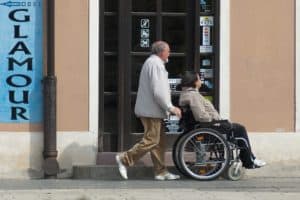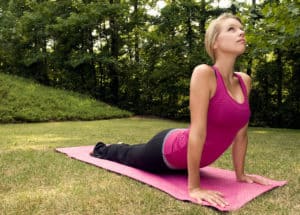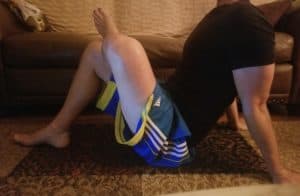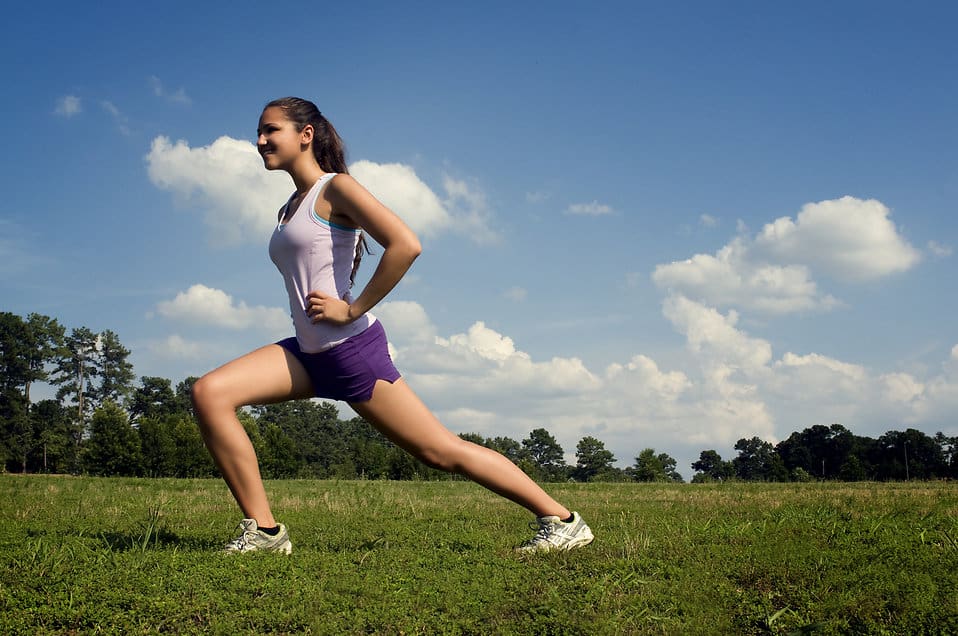People over age 65 have over a 20% chance of dying within a year after a significant hip injury. And the high risk of death could remain elevated for up to 10 years.(1) That is a staggering statistic. But the good news is that the chance of hip injuries and falls can be reduced with regular hip stretches and strengthening exercises.

I know at this point a lot of you may be saying that you aren’t over 65 yet, so there is no need for concern. But the reality is that after age 30, most people begin to lose muscle mass and flexibility at rapid rates.
This loss of muscle mass and flexibility has a direct link with hip injuries due to a fall.
Prevention is the key to avoiding these issues.
Aside from that, many people deal with hip flexor pain and tightness. By doing a regular hip flexor stretch and incorporating a regular resistance training program and strengthening routine you can easily fix this issue.
Contents
What are Hip Flexors?

The hip flexors are a group of muscles that help perform flexion of the hip joint. They are primarily responsible for bringing the knee up towards the chest and for allowing the body to bend forwards and sideways at the hip.
The main hip flexor muscles include the psoas and the iliacus.
In most hip movements, one or more of the hip flexor muscles are working in conjunction with other muscles to provide motion. These other muscles primarily include the gluteals, adductors, and quadriceps.
Reasons To Start A Hip Flexor Stretch and Strengthening Routine
 Most people only stretch their hip flexor muscles when they are tight. This is probably not the best course of action.
Most people only stretch their hip flexor muscles when they are tight. This is probably not the best course of action.
First off, the reason for this is that chronic tight hip flexors might be a sign that they are weak. Or it can be a sign that another muscle group is weak. You can do hip flexor stretches all day and they will never fix the problem if the underlying problem is weak muscles.
Secondly, if you are only addressing the problem after you notice hip flexor tightness you are already too late.
As I mentioned earlier, prevention is the name of the game. If we strengthen hip flexors and stretch them on a regular basis, we will be able to avoid injuries like a hip fracture or hip flexor strain.
1. Better Balance Helps To Avoid A Hip Fracture
 Research shows that flexibility and strength are directly correlated to balance. This is especially relevant for the core and lower body. (1)
Research shows that flexibility and strength are directly correlated to balance. This is especially relevant for the core and lower body. (1)
The hips are a key area of the body because they are the direct link between both of those areas.
And not only do loose hips allow the leg to move about freely in their joint, but strong muscles also protect the bones.
First off, these two things working together enable a person to react to a sudden instability. When our joints are working properly we take many things for granted. Slipping on a floor, tripping on a rock, or having something hit our leg are all things that we can react to quickly and prevent a fall. But when flexibility is limited or the muscles are weak, it will surely result in a fall.
Secondly, if a fall does happen, our muscles serve to protect our bones. Muscles offer padding on top of bones to cushion them when they hit hard surfaces. This cushion absorbs and redirects the impact in order to reduce injury.
Also, a very common overlooked point of strength training is its increase in bone density. Denser hip bones are less likely to break.
By doing hip stretches and strengthening exercises, we hit on all these points. We increase our balance to prevent falls. Also, by being flexible and strong we are more likely to catch ourselves before falling. And finally, added muscle will protect the bones and avoid a hip fracture.
2. Fix Tight Hip Flexors
Again, just stretching the hip flexors alone typically is not addressing the root of the problem and could even be making a deeper issue worse.
The complication is that there are so many muscle groups working together in the hip area of your body. Symptoms like tight hip flexors or a sore lower back could be another thing. A weakness in a specific muscle group such as a weak core or gluteals could be overcompensated by tight hip flexors.
In this case, hip stretches alone will not solve anything.
This short video below by Jeff Cavaliere of Athlean-X is a great video to start you on the way to diagnose whether hip flexor tightness is caused by weak hip flexors. Don’t mind the click bait title.
Also, as you can see in the video he also includes a great exercise to strengthen the hip flexors.
Top Hip Stretches
Due to all the possible reasons of tight hip flexors, the best bet is to get a professional opinion before going intense on hip stretches. Physical therapists and personal trainers are trained on what to look at and can better identify the issue.
If something feels like it is wrong with your hips, consulting a specialist can be a crucial step in avoiding further injury.
If you are just looking to incorporate some different hip stretches into your routine or are looking to start some preventative maintenance, here is a great place to start.
Below are 3 different hip flexor stretches that can jump-start your way to healthier hips. Each one explains step by step how to stretch hip flexors.
1. Traditional hip flexor stretch
- Kneel on one knee with the other leg upright and foot planted flat on the ground.
- Flex abs.
- Tighten gluteals and gently move hips forward.
- Hold for 20 seconds while breathing into the stretch. Feel hip flexor on the side of the leg with the knee on the ground stretching.
- Switch legs.

2. Cobra Pose
- Begin by lying face down on the floor or a mat.
- Have your toes pointed outward with the tops of your feet flat on the floor.
- Set your legs a few inches away from one another.
- Place your hands palms down on the ground beneath your shoulders.
- Extend your arms to raise your chest up.
- Engage the gluteals and lower back muscles and you arch your chest up.
- Feel the hip flexors stretching.

3. Seated Figure Four (or Seated Pigeon Pose)
- Sit down with your knees bent and feet flat on the floor.
- Place your hands at your sides on the floor for stability.
- Place your left foot above the top of your right knee.
- Slide your butt towards your right foot.
- Relax your shoulders and neck.
- Breathe deeply.
- Go as deep into the stretch as you feel is appropriate.
- Feel your as your hip stretches.

Conclusion
Many of the hip problems that we run into stem from the lack of activity in our lives. As a society, we are spending more and more time sitting. Not only does that affect our hips, but it also affects our other muscle groups.
From our slouched position our abdominal muscles aren’t working to stabilize our core. Our gluteals aren’t firing and are becoming weak. And our back isn’t doing much better.
By getting active and incorporating physical activity into our lives we can reduce issues. One of the things we can add is a regular routine of hip stretches and exercises. These will not only serve to reduce hip flexor tightness and pain, but will also reduce our chance of having a catastrophic fall that could lead to a serious hip injury such as a hip fracture.
And in the end, it will improve our quality of life and even reduce our risk of death.
References:
